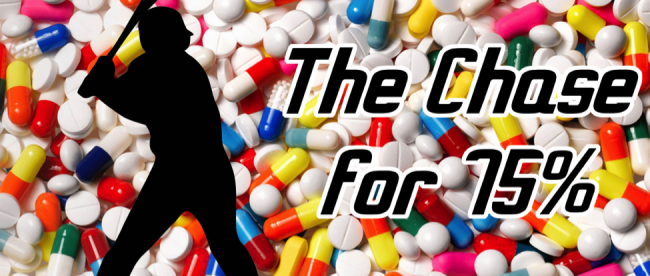The Chase for 75%: The History of Steroids and Stigma in Baseball

From the seven-year old player on a Little League team to the Major Baseball League’s most decorated hitter, all baseball players have the same dream: to make it to Cooperstown, the illustrious Baseball Hall of Fame. Each year, the Baseball Writers’ Association of America votes on a list of eligible players for induction into the Hall of Fame. While some lucky candidates are voted in on their first time on the ballot in their first year of eligibility, many others have to wait several years, and exponentially more players never even get their name in the conversation. Here, the most difficult situation comes into play when an all-time great’s record is tarnished by their use of performance enhancing drugs during the “steroids era.”
However, many of these players that were once declared forever banished from the Hall of Fame (such as Barry Bonds and Roger Clemens) are starting to see the tides change, as each year they slowly accumulate more percentage votes in an effort to reach the required 75% for induction. This year, they both exceeded the 50% threshold on their way to the 75% required for admission—and these players should both ultimately end up in the Hall of Fame.
While steroids can sometime seem like a recent phenomenon of the early 2000s, the use of performance enhancing drugs has existed throughout the history of sports, even as far back as 776 B.C. during the first Olympic games. In 1928, the International Association of Athletics Federation introduced the first anti-doping rule in sports, marking the following decades of legislation that would try to tackle the use of steroids in sports. Drug testing followed several decades after this rule, and disqualification for those that violated the anti-doping rules. As testing became more regular, the number of violations became more relevant and newsworthy.
Outside of professional sports, there were similar concerns in high school and other junior sport leagues that young individuals were using steroids to get a competitive edge, even risking their health and development. In 1988, President Ronald Reagan signed the Anti-Drug Abuse Act which outlawed the sale of steroids for non-medical purposes. The hugely expansive law also prevented the sale of drugs near schools, and while there were many drugs banned in this act, steroids were notably present. Only two years later, Congress passed a specific act banning steroids in the Anabolic Steroids Control Act, placing steroids in the same legal class as “amphetamines, methamphetamines, opium and morphine.” This classification obviously added more teeth to the previous bans and created large penalties for abuse of these legislations.
While the United States drafted legislation to attempt to curb the use of steroids, Major League Baseball was fighting the same battle, although more often on the grounds of fairness and the integrity of the game rather than public safety. However, this ban in 1991 clearly did not curb the problem as the most relevant and noteworthy steroid abuse cases occurred in the early 2000s, with a former baseball player saying that over 50% of MLB Players were currently using steroids.
In 2004, President Bush signed the Anabolic Steroid Control Act which added many more “steroid-based drugs” to the Schedule III classification from a decade earlier. The MLB followed suit by including these drugs on its prohibited list and continued to implement more testing. As the years past, more and more heavy hitters in the MLB and fan favorites turned into lifetime enemies as their steroid use became a question forcing them to either admit to usage or to lie, and be caught (in some cases, legally, like Bonds and his indictment by a Grand Jury).
While steroids are often posited as a clear issue, there are many analysts that argue that steroids are not unlike many other drugs and thus should not be banned just on the grounds of unfairness . These analysts argue not only that performance enhancing drugs make sports more fun to watch in many instances, but also that the blurry lines that have been drawn banning some steroid-based drugs and not others have created more of a mess than a solution to the problem. However, much of these arguments hinge on the fact that, from a sports perspective, preventing drug use is futile and thus we should just explicitly allow it.
While it is unlikely that such a proposal will ever see wide approval or adoption, the clear flux that leaves Barry Bonds and the like in seemingly perpetual uncertainty may be coming to a close. When Bud Selig, the Commissioner of the MLB during the “steroid era,” was admitted to the Hall of Fame this past year, many opponents of the players from that era dropped their swords and argued that it was simply unfair to allow the Commissioner who allowed this all to happen and to solely punish the players. While it is clear that the ban on steroids should persist, the ban on select individuals from the pearly gates of Cooperstown should cease to exist when even the Commissioner and their peers have snuck through. Barry Bonds’ eligibility for the Hall of Fame ends in five years, so we will all have to wait, see, and hope that fairness overcomes and the 20%+ gap will close before his homerun record is banished from the gates of Cooperstown.
Suggested citation: Daniel Sperling, The Chase for 75%: The History of Steroids and Stigma in Baseball, Cornell J.L. & Pub. Pol’y, The Issue Spotter, (Mar. 8, 2017), http://jlpp.org/blogzine/the-chase-for-75-the-history-of-steroids-and-stigma-in-baseball/.
